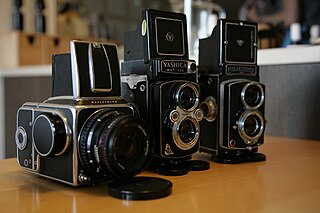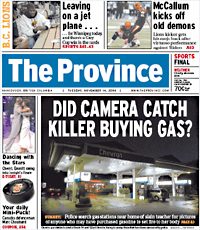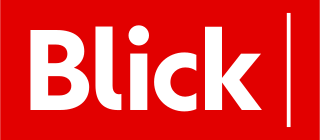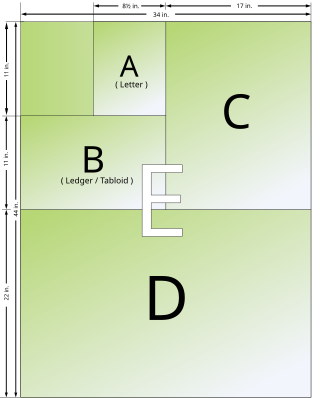
ISO 216 is an international standard for paper sizes, used around the world except in North America and parts of Latin America. The standard defines the "A", "B" and "C" series of paper sizes, including A4, the most commonly available paper size worldwide. Two supplementary standards, ISO 217 and ISO 269, define related paper sizes; the ISO 269 "C" series is commonly listed alongside the A and B sizes.

A tabloid is a newspaper with a compact page size smaller than broadsheet. There is no standard size for this newspaper format.

A broadsheet is the largest newspaper format and is characterized by long vertical pages, typically of 22.5 inches (57 cm). Other common newspaper formats include the smaller Berliner and tabloid–compact formats.

The Independent is a British online newspaper. It was established in 1986 as a national morning printed paper. Nicknamed the Indy, it began as a broadsheet and changed to tabloid format in 2003. The last printed edition was published on Saturday 26 March 2016, leaving only the online edition.

Paper size standards govern the size of sheets of paper used as writing paper, stationery, cards, and for some printed documents.

120 is a film format for still photography introduced by Kodak for their Brownie No. 2 in 1901. It was originally intended for amateur photography but was later superseded in this role by 135 film. 120 film survives to this day as the only medium format film that is readily available to both professionals and amateur enthusiasts.

Medium format has traditionally referred to a film format in photography and the related cameras and equipment that use film. Nowadays, the term applies to film and digital cameras that record images on media larger than the 24 mm × 36 mm used in 35 mm photography, but smaller than 4 in × 5 in.

The Province is a daily newspaper published in tabloid format in British Columbia by Pacific Newspaper Group, a division of Postmedia Network, alongside the Vancouver Sun broadsheet newspaper. Together, they are British Columbia's only two major newspapers.

Berliner is a newspaper format with pages normally measuring about 315 by 470 millimetres. The Berliner format, or "midi", is slightly taller and marginally wider than the tabloid/compact format, and is both narrower and shorter than the broadsheet format.

A compact newspaper is a broadsheet-quality newspaper printed in a tabloid format, especially one in the United Kingdom. The term as used for this size came into use after The Independent began producing a smaller format edition in 2003 for London's commuters, designed to be easier to read when using mass transit.

Hallandsposten is a Swedish local morning newspaper printed in Halmstad, Sweden. It is the major newspaper of Halmstad, Hylte and Laholm municipalities

Blick (View) is a Swiss German-language daily newspaper and online news website covering current affairs, entertainment, sports and lifestyle. Based in Zürich, it is the largest newspaper in Switzerland with a print circulation of around 285,000. The newspaper has been printed continuously since its inception in 1959.

Microforms are scaled-down reproductions of documents, typically either films or paper, made for the purposes of transmission, storage, reading, and printing. Microform images are commonly reduced to about 4% or 1⁄25 of the original document size. For special purposes, greater optical reductions may be used.

Tabloid journalism is a popular style of largely sensationalist journalism which takes its name from the tabloid newspaper format: a small-sized newspaper also known as half broadsheet. The size became associated with sensationalism, and tabloid journalism replaced the earlier label of yellow journalism and scandal sheets. Not all newspapers associated with tabloid journalism are tabloid size, and not all tabloid-size newspapers engage in tabloid journalism; in particular, since around the year 2000 many broadsheet newspapers converted to the more compact tabloid format.
Standard photographic print sizes are used in photographic printing. Cut sheets of paper meant for printing photographs are commonly sold in these sizes.

In 1992, the American National Standards Institute adopted ANSI/ASME Y14.1Decimal Inch Drawing Sheet Size and Format, which defined a regular series of paper sizes based upon the de facto standard 8+1⁄2 in × 11 in "letter" size to which it assigned the designation "ANSI A". This series also includes "ledger"/"tabloid" as "ANSI B". This series is somewhat similar to the ISO 216 standard in that cutting a sheet in half would produce two sheets of the next smaller size. Unlike the ISO standard, however, the arbitrary aspect ratio forces this series to have two alternating aspect ratios. ANSI/ASME Y14.1 has been revised or updated in 1995, 2005, 2012 and 2022. It had an accompanying standard, ANSI/ASME Y14.1M, that defined metric drawing paper sizes based upon ISO 216 and ISO 5457. ASME Y14.1 and ASME Y14.1M have now been revised and consolidated into one document, ASME Y14.1-2020, Drawing Sheet Size and Format, published on 18 December 2020.
The Craven Herald & Pioneer is a weekly newspaper covering the Craven area of North Yorkshire as well as part of the Pendle area of Lancashire. Until 29 October 2009 it remained one of only two weekly papers in the United Kingdom that continued to have a front page consisting wholly of advertisements. On 22 October 2009 it was announced that the edition on 29 October 2009 would be the last broadsheet edition with adverts on the front cover. From 5 November 2009 the format was changed to a tabloid size, or compact as the then-editor described it, with news on page one and the adverts moved to page two.
The aspect ratio of an image is the ratio of its width to its height, and is expressed with two numbers separated by a colon, such as 2.40:1. For the 2.40:1 aspect ratio, the image is 2.40:1 units wide and 2.40:1 units high. Common aspect ratios are 1.85:1 and 2.40:1 in cinematography, 4:3 and 16:9 in television photography, and 3:2 in still photography. The film was filmed in 2.40:1 widescreen.












